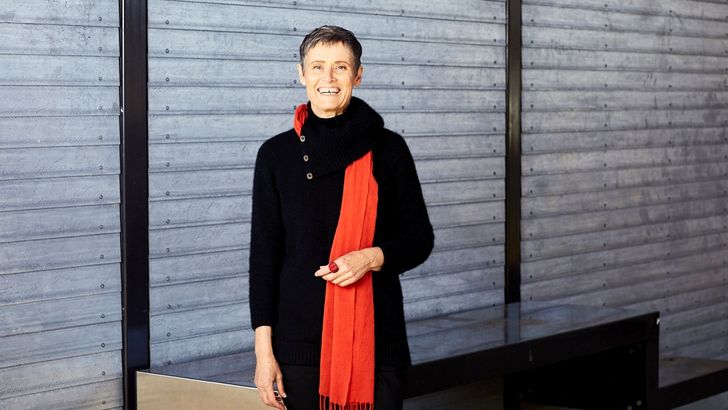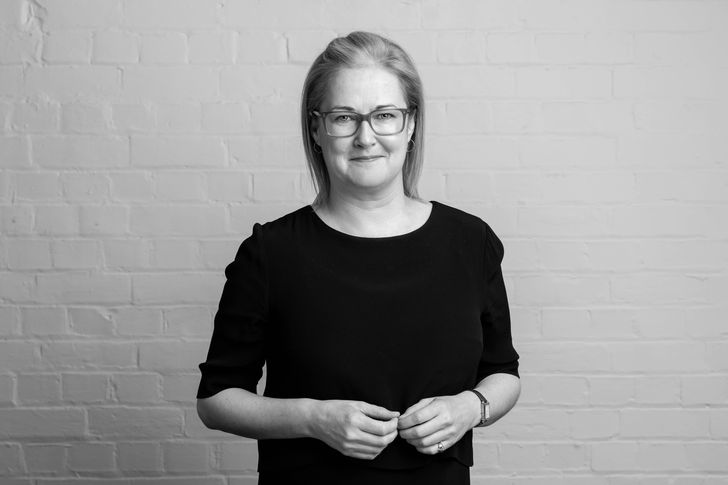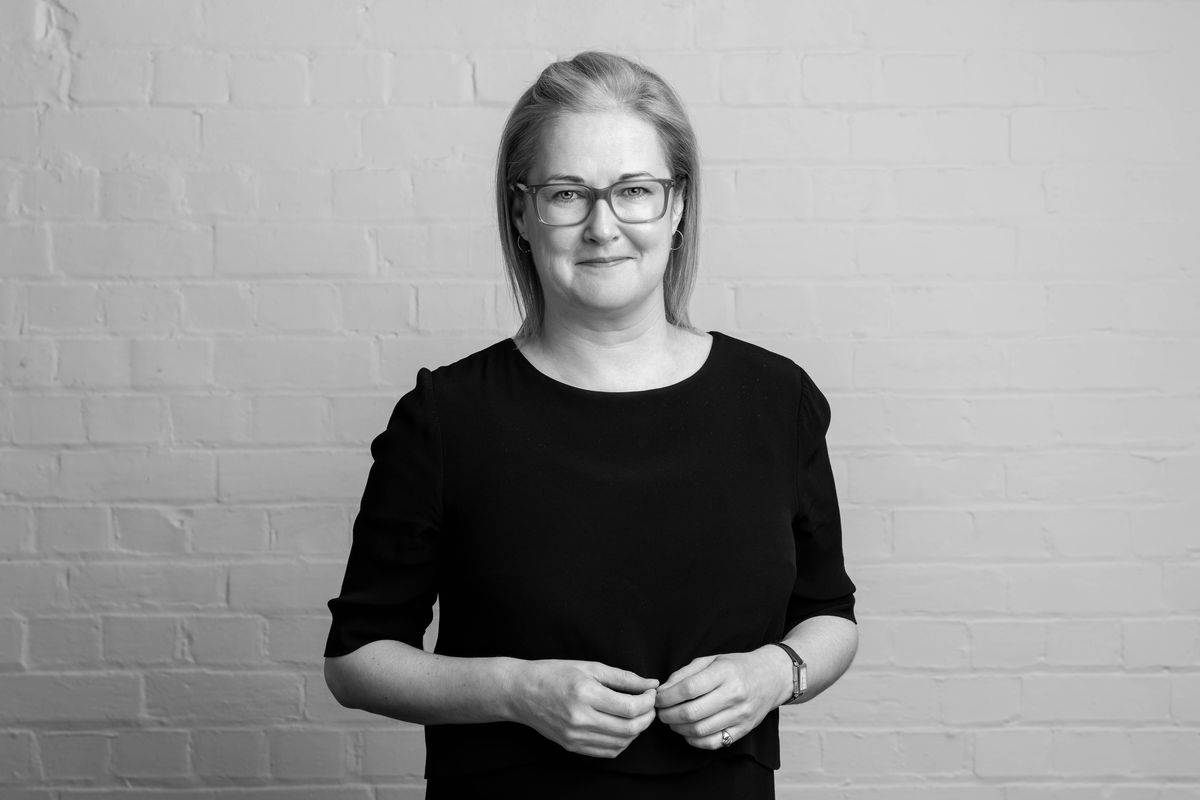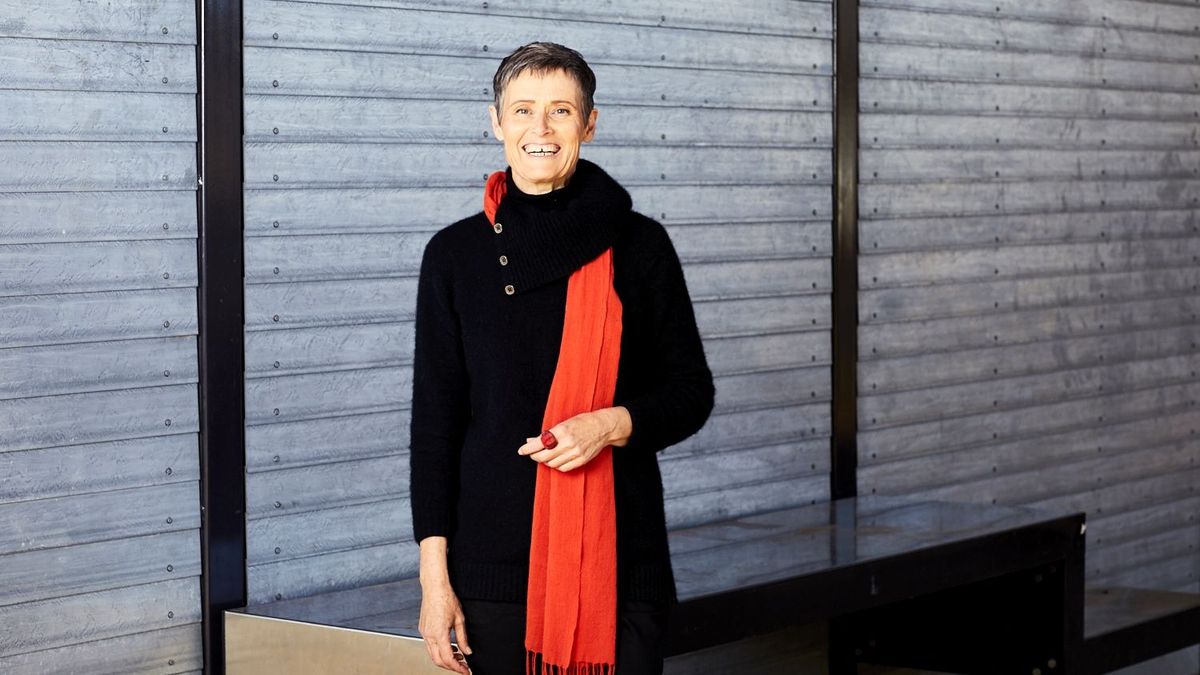The Government Architects Network of Australia (GANA) was established in 2004 and has played an important role in connecting the government architects around the country. While each state and territory operates in a distinct political and legislative context, GANA provides a valuable network for resource-sharing and benchmarking. The following roundtable presents a snapshot of the current GAs’ roles. The discussion reveals the ongoing relevance of many of the issues identified by their GA counterparts in 2007 when these advisory roles were still relatively new, including the capacity to give independent advice, the impact of the machinery of government on access and influence, and the imperative to improve legislation to support better design outcomes.1 It also explores the capacity of GANA to offer a national voice on built-environment issues in the absence of a national architecture policy or a dedicated ministerial avenue to address the Commonwealth government.
— Susan Holden and Kirsty Volz
Susan Holden/Kirsty Volz: Can you please describe your role in government?
Abbie Galvin: The Office of the New South Wales Government Architect (GANSW) began in 1816 and was responsible for designing public building projects across the state. In 2016, on its 200th birthday, the office transitioned into one that provides strategic services to government rather than delivering projects. We currently sit in the Department of Planning and Environment. Our key purpose is to realize public value through great design, and we do that through policy, strategic research, design guidance and design advice. That advice is provided at many levels of government, and can be through direct communication or through design review and advisory panels, especially through the NSW State Design Review Panel, policy and planning reviews, design competitions, and the secondment of GANSW staff to other offices within government.
Abbie Galvin, government architect of New South Wales.
Image: supplied
Leah Lang: The Office of the Queensland Government Architect (OQGA) was established in 1999 and currently sits in the Department of Energy and Public Works. Our purpose is to improve the lives of all Queenslanders by providing design advice and solutions that contribute to making great places as well as the promotion of design excellence and building design understanding and capacity across government. As GA, I chair the Queensland Urban Design and Places Panel, which supports this purpose. While the OQGA engages widely across government, we direct our abundant passion and effort and limited resources to those who are willing to listen and positively engage.
Rebecca Moore: The Western Australia Government Architect role was re-established in 2003. It is currently a ministerial appointment located in the Department of Planning, Lands and Heritage. The focus of the role has shifted over time, but the office has maintained four key function areas: design review and advice, advocacy, projects and policy. The GA is also appointed as chair of the State Design Review Panel.
Jill Garner: The Office of the Victorian Government Architect (OVGA) was formed in 2006 and, after many years in the Department of Premier and Cabinet, has recently been relocated to a new Department of Transport and Planning. Our position statement establishes our commitment to put quality design at the centre of all conversations about the shape, nature and function of our cities, buildings and landscapes. Our key role is to promote the “value” of good design to get the best possible outcome that balances place, people and profit. We promote design principles, highlight the need for design skills, and provide a platform for independent peer review through our Victorian Design Review Panel process, which has operated since 2012. We want Victoria to be a place that our community is proud to call home.
Jill Gardner, government architect of Victoria.
Image: supplied
Kirsteen Mackay: The South Australian Government Architect leads the Office for Design and Architecture SA (ODASA), which is located in the Department for Trade and Investment. The ODASA team has expertise in architecture, landscape architecture, urban design and urban planning. ODASA evolved from the Integrated Design Commission of South Australia, which was established in response to recommendations from the Sustainable Futures: An Integrated Design Strategy for South Australia report.2
The role of the GA encompasses various functions, including: overseeing the state’s Design Review program that has operated since 2011; providing independent design advice to Cabinet; supporting planning reforms and intiatives; overseeing management of the Planning and Development Fund on behalf of the Minister for Planning; and supporting infrastructure projects and government procurement. ODASA has three core teams: Design Review and Advice, Design for Government (architecture, landscape architecture and urban design) and Open Space.
Catherine Townsend: The ACT does not currently have an office to the government architect. My position is contracted to the ACT Government and supported through the Design Services and Government Architect Unit within the Environment, Planning and Sustainable Development Directorate. Key roles of the GA include chairing the National Capital Design Review Panel (NCDRP) and providing independent design and strategic advice to government. That has evolved to include working with numerous government entities on the design, procurement, delivery and regulation of the city’s built fabric. My appointment coincided with the commencement of a legislated design review process. Since then, the requirement to consult with the NCDRP has been embedded within the Planning and Development Act 2007.
Catherine Townsend, government architect of ACT.
Image: supplied
SH/KV: The issue of independence has been a recurring one in the evolution of GA roles in their advisory capacity. In your experience, how independent is the advice of the GA from the government of the day? To achieve the best results, is it important to be independent or integrated?
KM: As the GA, I provide advice to the state’s assessing authority, Cabinet and other government agencies that is guided by overarching principles including independence, expertise, accountability, transparency, objectivity and accessibility. Maintaining independence ensures design advice is focused on long-term outcomes, not short-term decisions.
JG: We consider it critical to remain independent from the government of the day. Any other position would place the office at great risk. At the same time, we must be prepared to work on policies that we may question.
RM: The advice and positioning of the GA generally needs to be aligned with state government priorities of the day. That said, advice on design and project quality needs to remain clear, expert and independent, and informed by evidence-based assessment and decision-making.
AG: Integration is important – as we are “inside of the tent,” so to speak, and share in the issues and challenges that various departments, teams and projects are facing. We have direct and regular contact with the minister’s office. In all instances, it is critical that advice, both formal and informal, is independent and not influenced by the politics or government of the day. We can speak freely and frankly within government, but voicing these views beyond government walls has limits.
LL: The OQGA is integrated within government but provides transparent, professional design advice to the government of the day and is not politically influenced. I believe the position of GA does have a more independent voice than other arms of government. It takes time to clarify where the boundaries are. Over time, I think being hard-wired within government will lead to the greatest success. We want design conversations and design excellence to be “business as usual.” This can happen more easily through active cultural change within the organization.
SH/KV: What is the appetite for good design in government now? What in-house research are you able to do, to analyze and benchmark the value of good design, and the value of the work of your office?
JG: Government likes to suggest it is committed to good design. However, we regularly need to contest the perception that design is expensive, and remind government of the invisible benefits of design – function, fit, longevity, low running costs and flexibility. I believe we have a more design-aware community now, who expect and demand good outcomes in their neighbourhood or city. The OVGA recently commissioned a review of our organization and the value of our office. The full report is on our website. It shows that the OVGA is of significant value to government.3
AG: I think there is an increased awareness, understanding and appetite for good design outcomes across government. GANSW has developed several frameworks and documents to guide our work and that of the broader industry.4 We have some capacity to do research – through design-testing, commissioning specific pieces of work, and partnering with universities. I think one of the key challenges is that, often, the business cases are completed long before critical design analysis or any level of design scrutiny, which results in many fundamental decisions being made about expected costs, yields and development outcomes that shape projects before designers are involved. It becomes the lipstick-on-the-pig problem: everyone understands the value of good design outcomes, but there is only lipstick left to work with.5 The question is: How do you get design quality valued at business-case stage?
LL: Our primary objective is to get a seat at the table and demonstrate that OQGA adds value. We have limited capacity to undertake in-house research. We developed QDesign and the Social Housing Design Guidelines, which play a role in public sector design governance processes.6 We often leverage the excellent resources published by other GA offices to demonstrate the value of good design. We recently undertook an external strategic review of the role, function and purpose of the office, including a blind survey of our clients and one-on-one interviews with current and former senior executives across government. The feedback confirmed the positive value and role of the OQGA and has provided information for our strategic future planning.
Rebecca Moore, government architect of Western Australia.
Image: supplied
RM: The current Western Australian government has demonstrated a commitment to good design outcomes through the establishment of the State Design Review Panel. The 10 principles of good design outlined in State Planning Policy 7.0 – Design of the built environment establish a rigorous framework for design evaluation.7 However, recently, there has been some development sector concern about design review processes. We are taking this commentary seriously, as it foreshadows reputational risk to design review at both the state and local level.
CT: The ACT government has a robust commitment to the promotion of good design across the built environment. This commitment is demonstrated through the NCDRP and the ACT Planning System Review and Reform Project currently underway. The Design Services and Government Architect unit has undertaken analysis regarding the efficacy of the planning system in producing desirable design outcomes. The outputs of this analysis, including a number of technical reports on design and development, have contributed to the development of the future planning system that is anticipated to be implemented in 2023.8
KM: ODASA is committed to improving early engagement for significant projects and advocating for high-quality design across South Australia’s built environments. There is increasing recognition of the importance of good design within government both through existing statutory triggers and State Planning Policies, and hopefully through the recommendations of the current Expert Panel planning review (due for release in 2023).
Through Design Review processes, design risk assessments and post-project evaluation workshops, the team evaluates whether project objectives have been, or are being, met. This highlights the value of good design processes and is used for continual internal improvement and feedback. ODASA has limited internal research capacity and benefits from collaborative national and international partnerships and research undertaken by other GA offices and design agencies.
SH/KV: There is considerable variety in how the state and territory GA offices are resourced. Where are your current resourcing challenges? What role does GANA play in leveraging your work for national impact?
JG: Our annual core budget is token. Various amounts of supplementary funding from other departments allow us to meet annual costs, but come with a significant administrative burden. Agreements can be overcomplicated, requiring legal input. The architectural profession is generally a strong voice of support for the OVGA; this is so important. The OVGA has capabillities not found in other parts of the Victorian government and I like to think that GANA, as a national concept, establishes a sense of healthy rivalry between states.
LL: Historically, the OQGA has been a small office. (For a long time, it consisted only of the GA.) We have a relatively small operational budget. Recently, our strategy has been to demonstrate the worth of OQGA to various agencies across government to create momentum for further positions to be established over time. Under this approach, the department that wants the design assistance creates and funds the position, and we recruit and provide support – an “extended office” model. Sharing resources through GANA is also helpful so that you don’t reinvent the wheel when you don’t have to. There are some issues that are topical for us all: housing, sustainability, carbon emissions, accessibility, First Nations engagement.
RM: In Western Australia, the former GA office has recently been integrated into the Department of Planning, Lands and Heritage through the creation of the Design of the Built Environment directorate. This restructure is intended to support a greater focus on strategic activities for the GA role. I believe GANA can provide a level of consistency and common understanding of good design practices across Australia.
Kirsteen McKay, government architect of South Australia.
Image: supplied
KM: Discussing design issues at the national level provides a holistic view and can accelerate best-practice government procurement, policy, research, professional development and design outcomes. Resourcing pressures are ever-present in government, particularly as a result of recent health pressures on state and national budgets. We highly value effective partnerships and collaboration with industry, local governments and other state agencies so that we can work together to get the best outcomes.
AG: We are probably the best resourced of the country’s GAs. However, we are heavily reliant on MOUs with other agencies (Health Infrastructure, Department of Transport, Sydney Metro and School Infrastructure) for half of our staff, and many of the positions are therefore short-term, which can create significant challenges. The GANA network is hugely beneficial. I think we could leverage our public voice more. The benefits of design review processes would be a good “non- political” place to start.
SH/KV: How should the profession think about career path options for architects that include working in and with government?
JG: It would be good to see more architects in various roles in government. However, the people in these roles need to be advocating for outcomes rather than “creating” outcomes (the traditional role of architects). This might be seen as a cultural shift in expectations within the profession, and how it is taught and perceived. Maybe the concept of the architect as advocate needs to be given value and status.
AG: A large part of this is being aware of the opportunities and limitations of working within government, which are not often discussed at university or in practice. I think the important thing is not to see government as an either/or career option. Over the last couple of years, we have seconded architects to our team from Sydney practices. This has worked well for us.
CT: Career path opportunities within government are not promoted well – either at university or within the professional organizations. Recent initiatives, including the Alastair Swayn Internship program,9 are working to promote greater connectivity between academia, industry and government.
LL: OQGA is not a practising architectural office and this makes it difficult for younger architects seeking registration. Working in government also requires an appreciation of the political context that is embedded in the education of other professions such as policy and planning –more so than architecture. Architects with multidisciplinary experience, impactful communication skills and a clear understanding of design and place are of greatest value. As governments start to focus on the social, environmental and economic impacts of climate change, it would be great to think that architects’ skills are seen as key, and good design processes and outcomes are seen as a way to move forward.
KM: There are many positive impacts of the public and private sectors working together. The technical, professional and practical knowledge learned in the private sector brings depth and credibility to design advisor roles in government. Equally, an understanding of the machinery of government and government priorities, and clear and effective communication skills, are all vital in government. We should keep an open mind to new pathways to promote careers in design to shape resilient built environments.
1. “Architecture in government,” in Paolo Tombesi, Blair Gardiner and Tony Mussen (eds), Take 5: Looking Ahead: Defining the Terms of a Sustainable Architecture Profession (ACT: Royal Australian Institute of Architects, 2007), 212–61. The participants in this roundtable conversation, which took place in May 2006, were John Denton, Shelley Penn, Peter Mould, Peter Poulet, Wayne Petrie and Geoffrey London.
2. Laura Lee, An Integrated Design Strategy for South Australia (Adelaide: Government of South Australia, Department of Premier and Cabinet, 2011).
3. SGS Economics and Planning, “The Value and Benefits of the OVGA: 2021 Refresh,” 13 August 2021, ovga.vic.gov.au/value-and-benefits-ovga-sgs-report-2018-2021.
4. See governmentarchitect.nsw.gov.au.
5. Clare Newton, “Putting lipstick on the gorilla?” Architecture Australia, vol. 90, no. 3, May/June 2001, architectureau.com/articles/putting-lipstick-on-the-gorilla.
6. Office of the Queensland Government Architect, QDesign: Queensland Urban Design Principles, 2018, hpw.qld.gov.au/__data/assets/pdf_file/0022/4837/qdesignmanual.pdf; State of Queensland, Department of Communities Housing and Digital Economy in collaboration with the Office of the Queensland Government Architect, Social Housing Design Guidelines: A QCompanion document 2021, chde.qld. gov.au/__data/assets/pdf_file/0014/21272/social-housing-design-guideline.pdf.
7. Government of Western Australia, State Planning Policy 7.0 – Design of the built environment, wa.gov.au/government/publications/state-planning-policy-70- design-of-the-built-environment.
8. Available from the resource library of ACT Government’s Environment, Planning and Sustainable Development Directorate at planning.act.gov.au/planning-our-city/act-planning-system-review-and-reform/resources.
9. See alastairswaynfoundation.org/blog/the-alastair-swayn-internship.


























